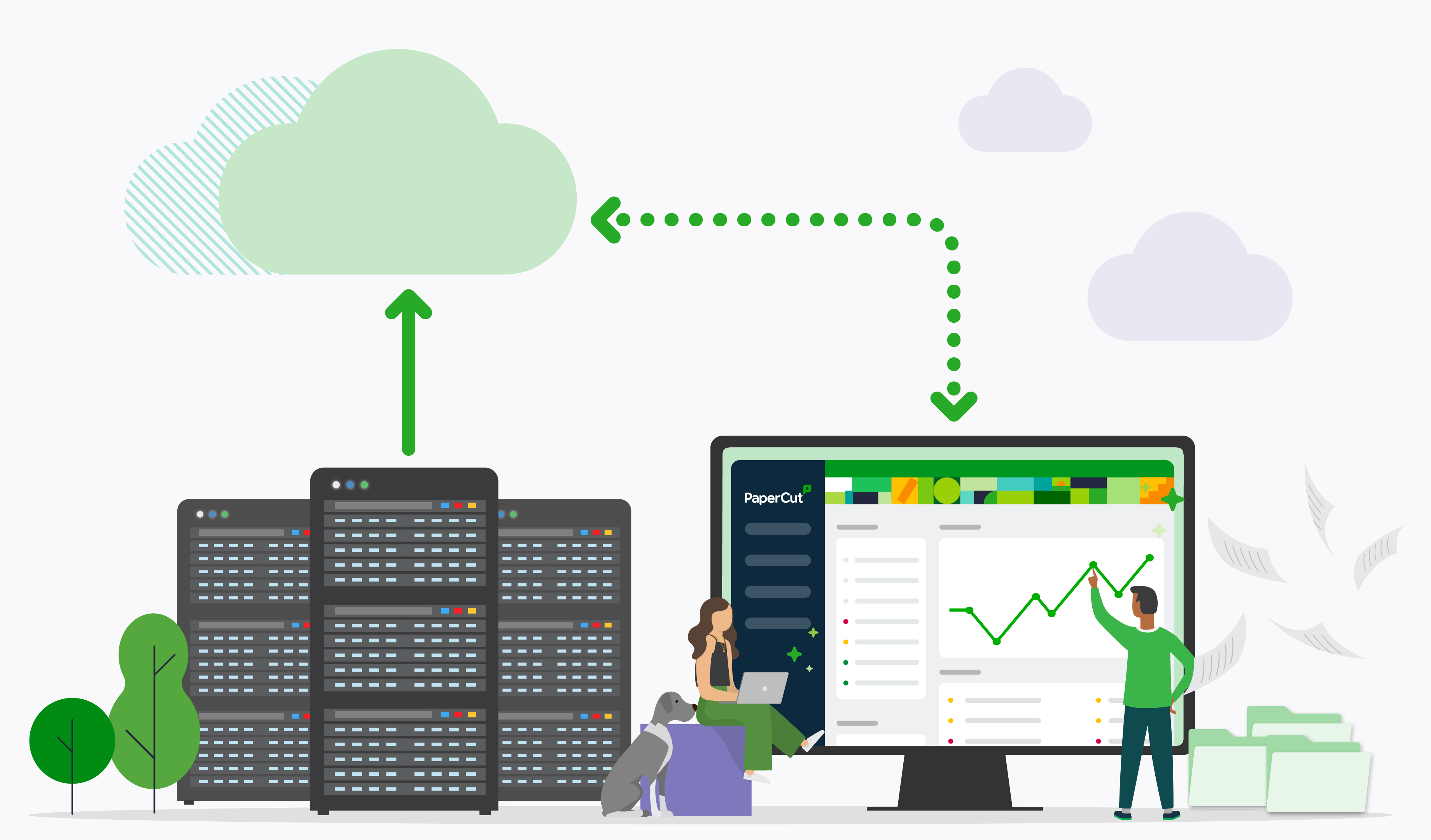The cloud has opened up a world of seamless, cheap, and remote data storage. It’s been one of the most significant tech breakthroughs in the last 15 years, allowing individuals and companies access to world-class IT infrastructure, rather than everyone setting up server farms in the office supply cupboard.
But what actually happens to your print jobs when they hit the cloud? What’s the story when it comes to data ownership? That’s where things get a little murkier.
Cloud print security is a top priority for any network, especially when you’re dealing with sensitive or confidential information. And considering the average cost of a cyber breach in the U.S. is $9.48 million , it pays to know more about data ownership in the cloud.
What do we mean by cloud print?
Cloud print is basically the process of sending a print job from your device to a printer – via an online cloud-based network. The cloud print service acts as the go-between for your computer and the printer, facilitating communication and synching up with a bunch of other cloud services, like storage and email.
In simple terms, it’s a way to print over the internet using somebody else’s infrastructure. And that somebody else is usually giant cloud service providers like Amazon Web Services (AWS), Microsoft Azure or IBM.
What happens to cloud data?
When we say data is stored in the ‘cloud’, we’re really saying data is stored or processed in gigantic server hangers owned by huge corporations. ‘Cloud’ is just a lot catchier. These data centers are located all over the world.
By centralizing data storage and communication, and allowing anyone to access it through the internet, cloud services let companies do all sorts of things they wouldn’t usually be able to do without massive IT investment. It’s a cheaper, streamlined, more secure way to move things around online.
Who owns cloud data?
Cloud data ownership depends on the terms of service of the individual provider, but generally users own their own data on the cloud. This stuff is broken down very clearly in your provider contract: providers generally agree to store your data securely, but ownership rights remain with the individual or company.
In the vast majority of cases, you maintain intellectual property rights and ownership over your own data, even when it’s stored on the cloud.
Having said that, providers have some rights, but these are mostly limited to data backup and replication – making sure your data is safe and easily available. In some cases, cloud providers can withhold or hand over your data if it’s necessary for regulatory compliance, or if asked by legal authorities. But this is pretty rare.
How to protect your data in the cloud
So you want to cloud print, but do it safely? No problem. Most cloud services are very secure and reliable. Still, there are a lot of things you can do to protect your cloud print jobs from outside interference.
Authentication
You should always set up strong authentication methods on your cloud print jobs, including multi-factor authentication (MFA). Role-based access control (RBAC) is also useful for monitoring who can manage your print data.
Encryption
Most reputable cloud providers offer end-to-end encryption for data stored on their servers. You can also encrypt documents before uploading them to the cloud. Make sure your passwords are robust (birthdays are out) and changed regularly.
Secure protocols
If you’re printing via the cloud, use secure print protocols like IPP and HTTPS to keep your data safe. IPP in particular allows secure sockets layer (SSL) encryption, preventing unauthorized parties from intercepting your print jobs.
How to protect your privacy when it comes to Cloud Print?
It’s important to remember that while cloud servers are mostly safe, they’re still an external, third-party solution. As such, users have limited control over how their data is actually stored and protected. It’s down to the strengths and protocols of the individual cloud service provider.
Still, this shouldn’t put you off using cloud print management. And there are several things you can do to protect your privacy on the cloud: client-side encryption (encrypting documents before loading them to the cloud), good cyber hygiene (staff training, passwords, two-factor authentication etc.) and data minimization (store only what you need on the cloud) are all useful.
We have a helpful white paper on how to get print resiliency and security without print servers. Click on the button below to start reading it now.
Read now Need some tips on cloud print management? Our team can help set up your network and secure your data.





